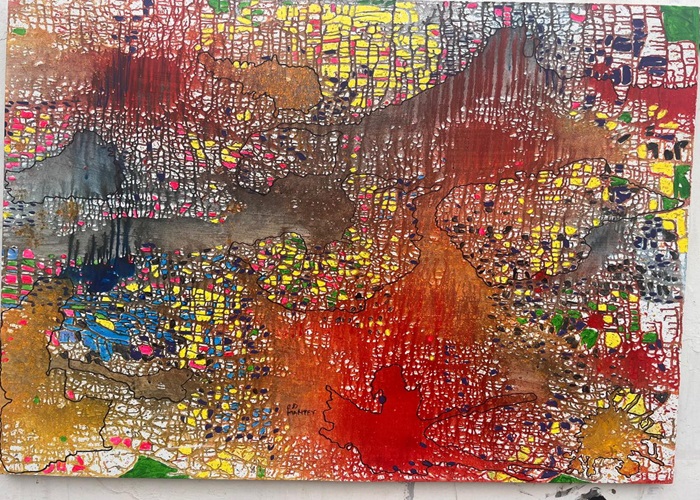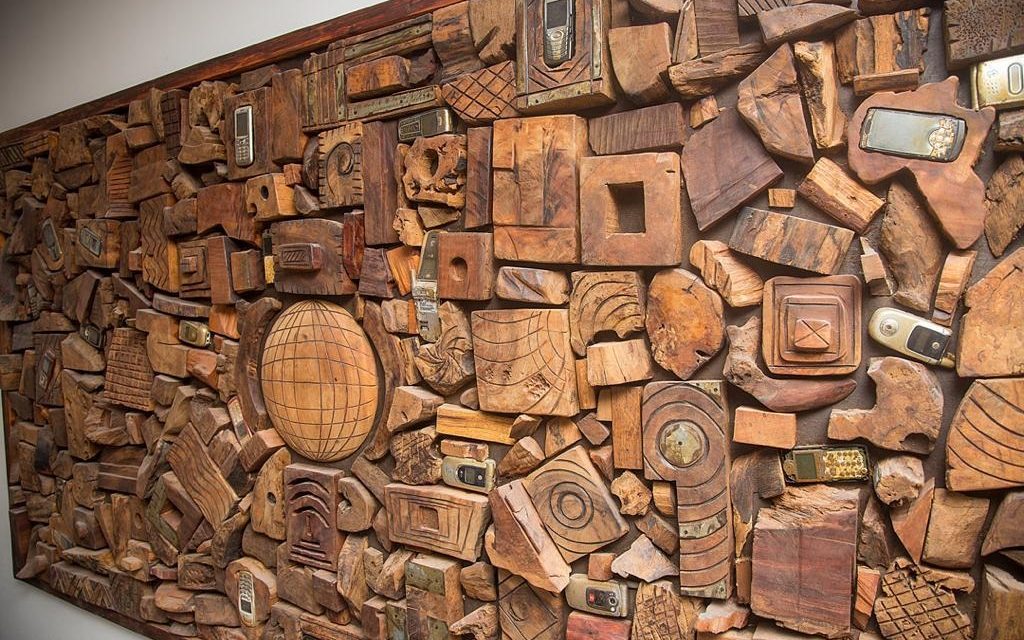African paintings have evolved into a dynamic force, playing a crucial role in nurturing economic growth and providing employment opportunities for skilled artisans throughout the continent.
Traditionally integral to African culture, these artworks are now gaining recognition for their significant contributions to the new social and economic order.
By understanding, appreciating, and integrating African art into the emerging economy, the continent can promote peace, transform global perceptions, and foster a stable society.

A Cultural and Economic Asset
Richard Okyere Mantey, a contemporary African painter born in Ghana, exemplifies the transformative power of African art.
His artworks have been exhibited across Europe and various locations in West Africa, including Ghana’s capital, Accra.
With nearly two decades of experience in sculpturing, painting, and woodwork, Richard’s journey underscores the potential of African art in contributing to economic and social development.
Currently, Richard’s artistic journey has taken him to London, France, Amsterdam, and other parts of Western Europe.
His focus on using art to convey messages about sustainability highlights how African artists can influence global conversations on critical issues.
The diverse landscape of African art
African art is incredibly diverse, with each region and culture boasting unique styles and aesthetic values.
This diversity enriches the global art scene and offers various economic benefits:
Job creation
African art provides employment opportunities for artists, craftspeople, and artisans, supporting local livelihoods.
By investing in and promoting art, communities can create jobs and reduce unemployment rates.

Tourism
Art attracts tourists, generating revenue and promoting cultural exchange.
Art galleries, exhibitions, and cultural festivals draw visitors from around the world, contributing to local economies.
Export market
There is a high global demand for African art, with exports generating significant foreign exchange earnings for many African countries.
This demand highlights the potential for African art to contribute to national economies through international sales.
Cultural preservation
Art helps preserve cultural heritage, supporting cultural tourism and community development.
By valuing and maintaining traditional art forms, communities can attract tourists interested in experiencing authentic cultural expressions.
Economic empowerment
Art provides a means for economic empowerment, particularly for women and marginalized communities.
By creating and selling their work, artists can achieve financial independence and improve their living standards.
Local economic growth
Art stimulates local economic growth by supporting small businesses and entrepreneurship.
Artists often collaborate with local suppliers and businesses, creating a ripple effect that benefits the wider community.
Cultural diplomacy
Art promotes cultural diplomacy, fostering international relations and cooperation.
Through art, African countries can build bridges with other nations, promoting mutual understanding and collaboration.
National pride
Art promotes national pride and identity, contributing to social cohesion and unity.
By celebrating and showcasing their artistic heritage, African nations can strengthen their national identity and pride.

The way forward
Richard Okyere Mantey, in discussing the impact of African art on the Ghanaian economy, emphasizes the vital role of arts as an economic industry.
Generating revenue, creating jobs, and developing communities, art is a potential resource base for economic development.
He advocates for increased recognition, support, and exploitation of art as a national priority.
By supporting African art, nations can boost their economies, promote cultural preservation, and empower local communities.
Art is not just a cultural asset; it is a powerful economic tool that can drive development and improve lives across the continent.
Through conscious efforts to integrate art into economic strategies, African countries can harness the full potential of their rich artistic heritage.





